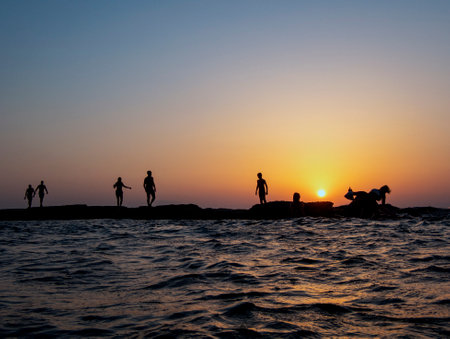Introduction to Oregons Trout Fishing Paradise
When it comes to trout fishing in the United States, few places can match the natural beauty and fishing quality that Oregon offers. With its clear mountain streams, lush green forests, and diverse aquatic habitats, the state is a dream destination for anglers chasing rainbow trout. Whether youre a seasoned fly fisher or just getting started with spinning gear, Oregon has something for everyone.
What makes Oregon stand out is its incredible variety of waterways. From the high desert rivers in the east to coastal creeks in the west, and everything in between, anglers can find rainbow trout thriving in almost every corner of the state. The mix of wild and stocked fish provides both action-packed days and opportunities to land trophy-sized rainbows.
Why Oregon is a Top Spot for Rainbow Trout
Oregon’s appeal goes far beyond just catching fish—it’s about where you catch them. Imagine casting your line beneath snow-capped peaks or drifting through pine-lined river bends as bald eagles soar overhead. Its not just fishing; its an experience. Heres a quick look at why so many anglers fall in love with trout fishing in Oregon:
| Feature | Why It Matters |
|---|---|
| Diverse Waterways | Lakes, rivers, creeks, and reservoirs offer options for all skill levels and styles. |
| Scenic Landscapes | The views are as memorable as the catch—forests, mountains, and untouched wilderness. |
| Year-Round Opportunities | Certain areas provide fishing even in winter months thanks to mild climates or tailwaters. |
| Access & Regulations | Oregon offers well-maintained public access points and clear fishing regulations to support sustainable angling. |
Types of Trout You’ll Find
While this series focuses on rainbow trout, its worth noting that Oregon is also home to other trout species like brown trout, brook trout, and native cutthroat. However, rainbows are often the most accessible and widespread across the state—making them perfect for both beginners and veteran anglers alike.
Quick Facts About Rainbow Trout in Oregon
- Native Range: Western North America, including parts of Oregon
- Stocked vs Wild: Many fisheries have both hatchery-raised and naturally reproducing populations
- Best Time to Fish: Spring through Fall (though some waters are fishable year-round)
- Common Techniques: Fly fishing, spinning with lures or bait, trolling in lakes
This introduction sets the stage for exploring specific streams and rivers across Oregon where you can chase rainbows like never before. From famous hotspots to hidden gems, get ready to discover some of the best trout waters worth planning a trip around.
2. The McKenzie River: A Classic Fly Fishing Haven
Nestled in the heart of Oregons Willamette National Forest, the McKenzie River is a dream come true for fly fishing enthusiasts. Its crystal-clear waters, healthy population of native rainbow trout, and beautiful surroundings make it one of the top destinations for anglers chasing rainbows in the Pacific Northwest.
Why Fly Anglers Love the McKenzie
The McKenzie River offers the perfect blend of accessibility and wilderness. Whether youre wading near the bank or drifting along in a drift boat, theres something here for every skill level. The river is especially known for its wild rainbow trout, which are protected under strict catch-and-release regulations in certain stretches to maintain a thriving fishery.
Key Highlights of the McKenzie River
| Feature | Description |
|---|---|
| Water Clarity | Consistently clear, even during spring runoff |
| Fish Species | Native rainbow trout, cutthroat trout, and hatchery steelhead |
| Best Access Points | Leaburg Dam, Finn Rock, and Blue River areas |
| Seasonal Hatches | Caddisflies (spring), Pale Morning Duns (summer), Blue-Winged Olives (fall) |
| Float Trips Available? | Yes – guided drift boat trips are popular and recommended for covering more water |
Seasonal Fly Fishing Tips
Spring: Early season hatches like March Browns bring rainbows to the surface. This is a great time for dry fly action.
Summer: Long days mean more fishing hours. Terrestrials and PMDs dominate.
Fall: Expect cooler temps and Blue-Winged Olive hatches. Fish get active before winter sets in.
Pro Tip:
If youre planning a float trip, consider hiring a local guide. Not only will they know where the fish are biting, but theyll also navigate you through some of the river’s trickier runs safely.
The McKenzie isnt just a river—its an experience. Whether youre casting dries at dusk or floating past moss-covered pines, this Oregon gem offers some of the best trout fishing in the West.

3. Deschutes River: Adventure and Wild Rainbows
Flowing through Central Oregons high desert, the Deschutes River is a must-fish destination for any angler chasing wild rainbow trout. Known for its fast-moving currents and rugged canyon walls, this river offers not just excellent fishing but also a true outdoor adventure. The Deschutes is famous for its native “redsides” — a strain of wild rainbow trout known for their vibrant color and aggressive fight.
Why Fish the Deschutes?
The Deschutes is a tailwater fishery below Pelton Dam, which means consistent water temperatures and flows that make it ideal habitat for trout all year round. The river’s isolated stretches provide a sense of solitude that’s hard to beat, and its healthy insect populations ensure great dry fly action, especially during the salmonfly hatch in late spring.
Top Fishing Sections
| Section | Best Time to Fish | Highlights |
|---|---|---|
| Upper Deschutes (Near Bend) | Late Spring to Early Fall | Wade-friendly, scenic meadows, smaller wild trout |
| Middle Deschutes (Below Benham Falls) | Spring and Fall | Pocket water, hiking access, good dry fly fishing |
| Lower Deschutes (Warm Springs to Maupin) | April to October | Larger rainbows, salmonfly hatch, float trips available |
Essential Gear Tips
- Rod & Reel: A 9-foot 5-weight fly rod with a quality reel and smooth drag system works great for handling strong currents and big fish.
- Fly Selection: Don’t forget your salmonflies in May and June. Also bring caddis, mayfly patterns, and nymphs like pheasant tails and stoneflies.
- Wading Gear: Durable waders and a sturdy wading staff are highly recommended—especially in the rocky lower sections.
Best Access Points
The lower Deschutes has several convenient access points along Highway 197 near Maupin, a popular base camp town for anglers. You can also access the river via boat ramps at Warm Springs, Trout Creek, or Harpham Flat if you’re planning a float trip. For walk-in fishing, look for trails along the BLM-managed Deschutes River Recreation Area.
Quick Tip:
If you’re planning to fish the lower river, consider hiring a local guide for your first trip. The water can be challenging to read, and guides know exactly where the big redsides hide.
The Deschutes isn’t just about catching fish—it’s about immersing yourself in one of Oregon’s most iconic landscapes while matching wits with some of the strongest wild trout in the West.
4. Rogue River: A Southern Gem for All Skill Levels
Flowing through the heart of Southern Oregon, the Rogue River is one of the states most iconic trout fishing destinations. Whether youre just learning to cast or have years of fly fishing under your belt, the Rogue offers something for everyone. With its blend of easy-to-access spots, breathtaking natural scenery, and a healthy mix of stocked and native rainbow trout, it’s no wonder anglers keep coming back.
Why the Rogue River Stands Out
The Rogue is known for its crystal-clear waters and manageable flow, making it ideal for both wading and floating. It’s also heavily stocked in certain sections by the Oregon Department of Fish and Wildlife, which boosts your chances of landing a catch even on slower days. Meanwhile, upper stretches and less-traveled tributaries are home to wild rainbow trout that offer a more challenging and rewarding experience.
Top Features of the Rogue River
| Feature | Description |
|---|---|
| Accessibility | Multiple public access points from Medford to Gold Beach; plenty of boat ramps and shorelines suitable for beginners. |
| Fish Variety | Mainly rainbow trout, with occasional steelhead and cutthroat in certain areas. |
| Wildlife & Scenery | Eagles, otters, deer, and black bears can often be spotted; scenic forested banks and mountain views enhance the experience. |
| Seasons | Spring through fall are prime times; winter offers quieter conditions but requires extra caution due to weather. |
Best Spots Along the Rogue
- Shady Cove: Great for beginners with easy wading access and regular trout stocking.
- Grants Pass Area: A favorite among locals for fly fishing with dry flies during summer months.
- Above Lost Creek Lake: Offers a more remote feel with opportunities to catch wild rainbows in smaller pools and riffles.
Pro Tip:
If youre new to the area or just getting started with trout fishing, consider hiring a local guide. They know when and where the fish are biting—and can help you make the most out of your time on the water.
The Rogue River isnt just a beautiful place to fish—its an inviting destination that welcomes anglers at all levels. Whether youre hoping for a relaxing afternoon or a more adventurous outing chasing native rainbows, this southern Oregon gem delivers every time.
5. Planning Your Oregon Trout Fishing Trip
Before you pack your gear and head out to chase rainbows in Oregon, its important to plan ahead to make the most of your trout fishing adventure. From choosing the right season to getting proper permits, here’s what you need to know.
Best Seasons to Fish for Trout in Oregon
While trout fishing is possible year-round in some parts of Oregon, certain seasons offer better conditions and more active fish. Heres a quick guide:
| Season | Highlights |
|---|---|
| Spring (March – May) | Great for dry fly fishing; rivers run high but clear up quickly |
| Summer (June – August) | Ideal time for mountain streams; longer daylight hours |
| Fall (September – November) | Less crowded; cooler water temps mean active trout |
| Winter (December – February) | Limited access due to snow, but some spring-fed rivers remain fishable |
Permits and Regulations
You’ll need an Oregon fishing license to fish legally, and possibly additional tags depending on the species or location. Heres what youll generally need:
- Resident/Non-Resident Fishing License: Available as daily, multi-day, or annual passes.
- Combined Angling Tag: Required if youre targeting salmon, steelhead, sturgeon, or halibut.
- Endorsements and Harvest Cards: Needed for specific waters or species—check local rules.
You can purchase licenses online through the Oregon Department of Fish & Wildlife (ODFW), at sporting goods stores, or even some grocery stores.
Hiring a Local Guide
If it’s your first trip to Oregon or youre aiming for a trophy catch, hiring a local guide can be a game-changer. Guides provide boats, gear, insider knowledge on where fish are biting, and they make sure youre following all regulations. Here are a few benefits:
- Time-Saving: Skip the guesswork and get straight to the action.
- Expert Tips: Learn new techniques from seasoned anglers.
- No Gear? No Problem: Most guides provide everything you need.
Respecting Oregons Natural Beauty
The landscapes and waterways that make Oregon a trout fishing paradise also deserve our care. Follow these simple tips to help preserve them:
- Practice Catch and Release: Especially with native rainbow trout in wild streams.
- Pack Out Trash: Leave no trace behind—carry out everything you bring in.
- Avoid Sensitive Areas: Stay on designated trails and avoid disturbing spawning grounds.
- Use Barbless Hooks: Easier on the fish and often required by law in certain areas.
A little preparation goes a long way when planning your Oregon trout fishing trip. Whether youre wading into a crystal-clear stream or floating down a remote river canyon, having the right info will help you land that perfect rainbow—and keep Oregons fisheries healthy for years to come.


